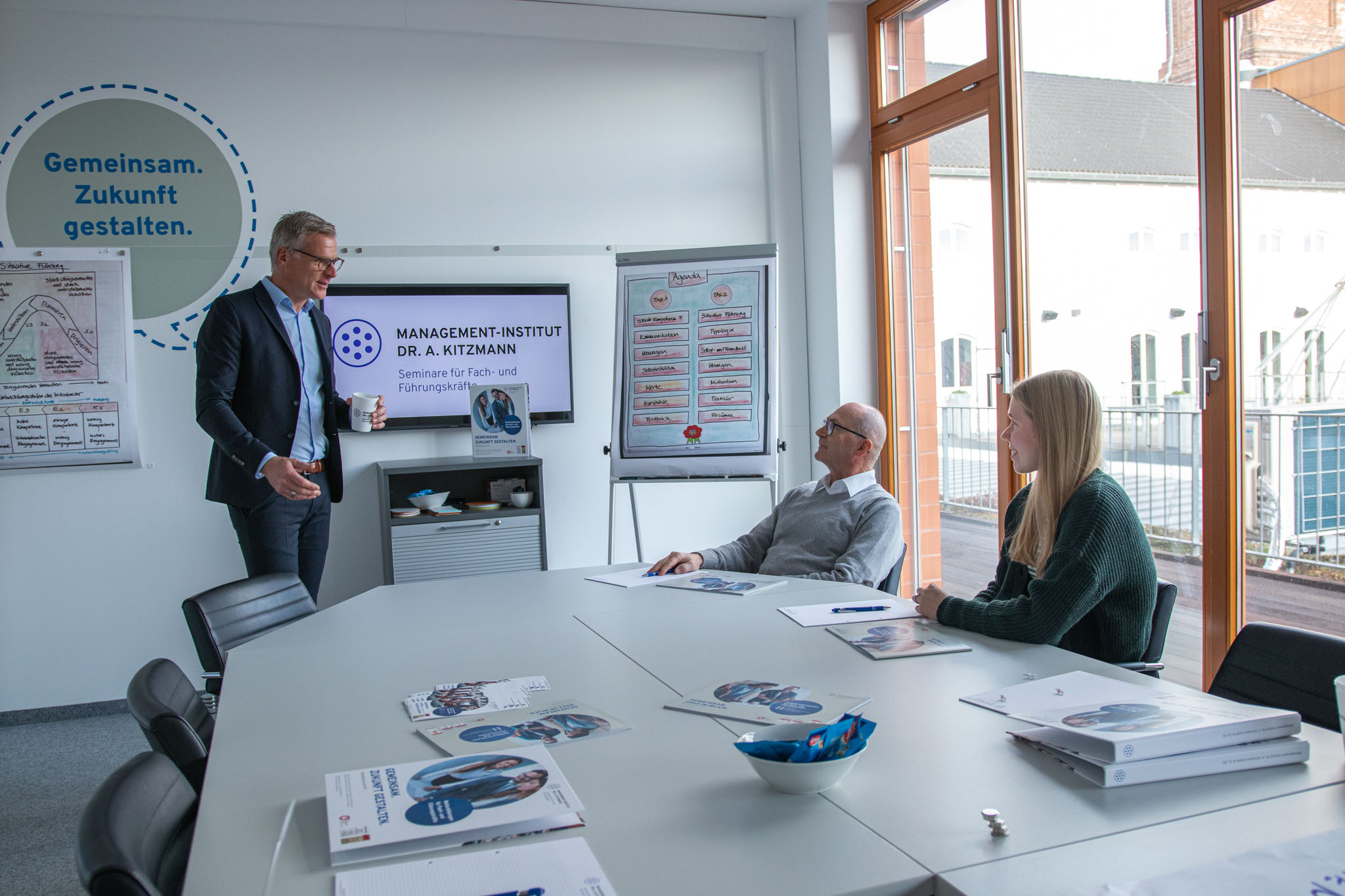
How do I come across to others?

Often, our beliefs about how we appear to others do not match reality. This self-image/other-image incongruence is often a hindrance to successful action. A realistic self-assessment is therefore a must for everyone who is in contact with other people, both professionally and privately.
The diversity of our appearance is an additional complicating factor. Our effect on others changes in all areas of life. In order to develop our personality, it is necessary to focus on both our professional life, the 1:1 encounter, and our private life. The distortions in the perception of our self often stem from the will to conform to a certain self-created ideal. Above all, gaining control over non-verbal communication takes a lot of training, since it is usually automatic, i.e. unconscious. Non-verbal communication includes not only gestures and facial expressions, but also, among other things, the formation of sounds, filled or unfilled pauses, or the emission of sighs.
By analyzing one's own behavior, e.g. via video camera, self-reflection is facilitated and alternative behaviors can be practiced.
The first judgment, and thus the decision between accepting or rejecting oneself, is made in the first few seconds of an encounter. This process is unconscious, and thus cannot be prevented. On the other hand, our self-image is capable of change. Accordingly, it is up to us to exert influence on the mediation of our self. It is necessary to let new influences flow into the concept of self-presentation, to retain existing ones and to avoid obstructive ones.
It is important to realize that the first impression we make on others is often formed in the first few seconds of an encounter. This process happens unconsciously and is difficult to control. In contrast, our self-image is flexible and changeable. So it is our responsibility to influence the way we present ourselves to others.
Overall, it is a matter of incorporating new influences into our self-concept, maintaining our positive qualities, and avoiding obstructive patterns of behavior. Through this conscious self-reflection and adjustment, we can bring our self-image closer to reality and make our interpersonal relationships more successful.
It is imperative to recognize that self-image/other-image incongruence is a natural facet of human interaction. Often, this mismatch is due to the fact that our self-perceptions are shaped by personal beliefs and experiences that do not always provide us with an objective picture of ourselves.
In modern society, where personal and professional relationships are often decided at first sight, it is of particular importance to raise our awareness of our own impact on others. Here, self-reflection can play a critical role. By honestly questioning ourselves and examining our behavior patterns, we can identify harmful self-images and replace them with healthier ones.
Another key to overcoming self-image/other-image incongruence lies in the ability to put ourselves in other people's shoes. By trying to understand the perspective of others and acting empathically, we can better align our own self-image with the expectations and needs of our social environment.
It is also important to note that our non-verbal communication, although often unconscious, is a powerful tool to influence our interpersonal relationships. Through deliberate training and practice, we can learn to purposefully use our body language, voice, and pauses to improve our impact on others.
In modern society, where personal and professional relationships are often decided at first sight, it is of particular importance to raise our awareness of our own impact on others. Here, self-reflection can play a critical role. By honestly questioning ourselves and examining our behavior patterns, we can identify harmful self-images and replace them with healthier ones.
Another key to overcoming self-image/other-image incongruence lies in the ability to put ourselves in other people's shoes. By trying to understand the perspective of others and acting empathically, we can better align our own self-image with the expectations and needs of our social environment.
It is also important to note that our non-verbal communication, although often unconscious, is a powerful tool to influence our interpersonal relationships. Through deliberate training and practice, we can learn to purposefully use our body language, voice, and pauses to improve our impact on others.
Finally, we should always be aware that working on our self-image is a continuous process. It takes time and patience to refine our self-perception and bring it more in line with reality. This process can be enriching as it not only helps us to be more successful in our interpersonal relationships, but also leads to deeper self-knowledge.
Overall, we should strive to develop a realistic self-image and enhance our ability to self-reflect. This will not only enable us to better achieve our own goals, but also to build more harmonious and fulfilling relationships with others.